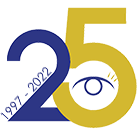Myopia Control
Myopia Control & MiSight® 1 Day Contact Lenses
Slowing The Progression of Nearsightedness
 Myopia, commonly called nearsightedness, is very common in children and is the most common human eye disorder in the world. The eyes of a child with myopia become longer over time, which causes distant objects to appear blurry. We are concerned about increasing rates of myopia because it causes an increased risk for myopic maculopathy (similar to macular degeneration), retinal detachment, cataracts, and glaucoma…any of which can cause impaired vision or blindness.
Myopia, commonly called nearsightedness, is very common in children and is the most common human eye disorder in the world. The eyes of a child with myopia become longer over time, which causes distant objects to appear blurry. We are concerned about increasing rates of myopia because it causes an increased risk for myopic maculopathy (similar to macular degeneration), retinal detachment, cataracts, and glaucoma…any of which can cause impaired vision or blindness.
Myopia often worsens as children get older, however a new treatment option is now available and may be able to help slow the progression of nearsightedness in your child.
MiSight® 1 Day Soft Contact Lenses Are Proven To Slow Myopia Progression
MiSight® 1 day soft contact lenses are the first and only FDA Approved and not only correct nearsightedness – they’re also the first soft contact lenses proven to slow the progression of myopia in children aged 8-12 at initiation of treatment.
Over a 3-year period, children wearing MiSight® 1 day soft contact lenses experienced a 59% reduction in myopia progression on average1, and over a 6-year period their nearsightedness progressed less than 1.00D. Learn more about MiSight® from our experts – give us a call or Request an Appointment Online.
It is extremely important to diagnose myopia as early as possible. If your child has mentioned a change in their ability to see from a distance at school or during outdoor activities it’s important to schedule an eye exam with the myopia management experts at Kids Eye Care.
Myopia Treatment and Research
Children today spend more time indoors and looking at screens which has led to increasing rates of myopia, and physicians are responding and researching ways to reduce myopia. Myopia is also the most common human eye disorder in the world, affecting 25% and 50% of adults in the US, and between 85% to 90% of young adults in some Asian countries such as Singapore and Taiwan.
The physicians at Kids Eye Care of Maryland played an integral role in the development of a nationwide Pediatric Eye Disease Investigator Group (PEDIG) study to reduce myopia.
Our approach first involves lifestyle changes, including:
- 2 hours outside daily
- Take a break after 20-30 minutes of screen time and reading
- Good lighting, preferably near a sunny window is important for any near work (reading, screen time, crafts)
Atropine Myopia Treatment
When more intervention is needed, we will use Dilute Atropine 0.01%. Although the exact mechanism of atropine in myopia control is not known, it is believed that atropine acts directly or indirectly on the retina or scleral, inhibiting thinning or stretching of the scleral, and thereby eye growth.
- No clinically significant visual side effects
- 50% reduction in myopia progression over 2 years
- Younger children (ages 6-8) likely need over 2 years of treatment
- Low incidence of light sensitivity and blurring at near
- No bifocals needed
- Off-label use (although dilute atropine has been well-studied, an FDA study and approval has not been done)
- Insurance may not cover
Atropine Sources
Any compounding pharmacy may be used though we are familiar with these:
15225 Shady Grove Rd #101
Rockville, MD 20850
301-948-4222
36-C Catoctin Circle, SE
Leesburg, VA 20175
703-779-3301
For more information: Myopia Consensus Statement – World Society of Pediatric Ophthalmology & Strabismus
MiSight® References:
1. Chamberlain P, et al. A 3-year randomized clinical trial of MiSight® lenses for myopia control. Optom Vis Sci. 2019;96(8):556–567.
2. Sulley A, et al. Wearer experience and subjective responses with dual focus compared to spherical, single vision soft contact lenses in children during a 3-year clinical trial. Poster presented at AAO 2019, San Francisco, Calif.
3. Chamberlain P, et al, Further comparison of myopia progression in new and established myopia control treatment (MiSight® 1 day) groups. Presentation at BCLA 2019, Manchester, England.
4. 95% – 100% of children expressed a preference for contact lenses over glasses at each visit over 36 months. Sulley A et al, Wearer experience and subjective responses with dual focus compared to spherical, single vision soft contact lenses in children during a 3-year clinical trial. AAO 2019 Poster Presentation.
5. Children new to contact lens wear aged 8-12, n= 130 @ 1 month after dispense. Chamberlain P et al A 3-year Randomized Clinical Trial of MiSight® Lenses for Myopia Control. Optom Vis Sci 2019;96:556-567.


